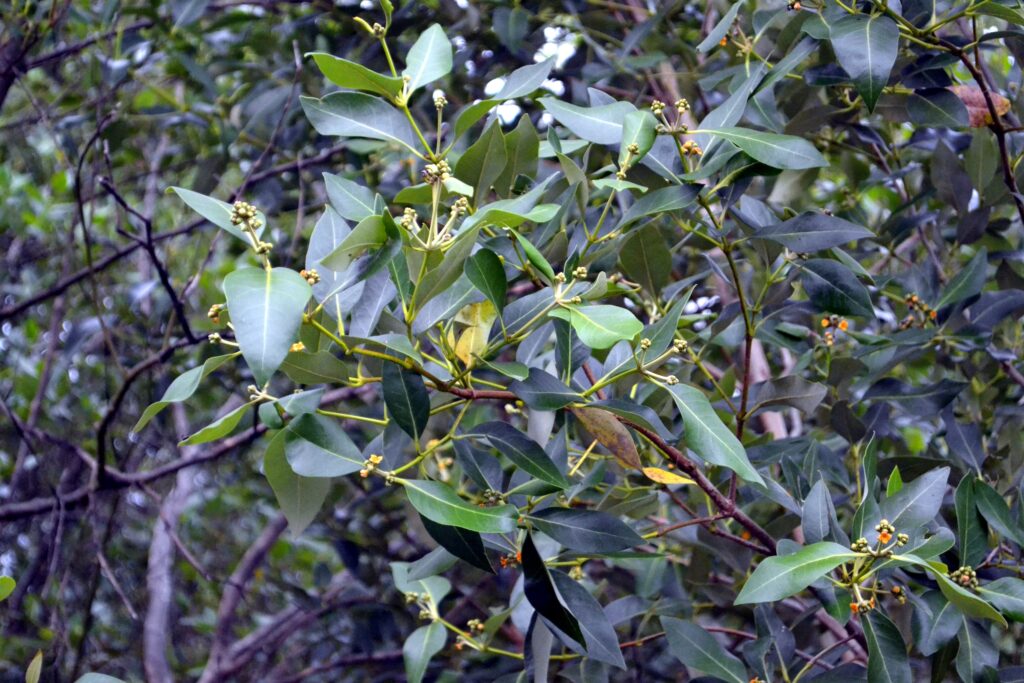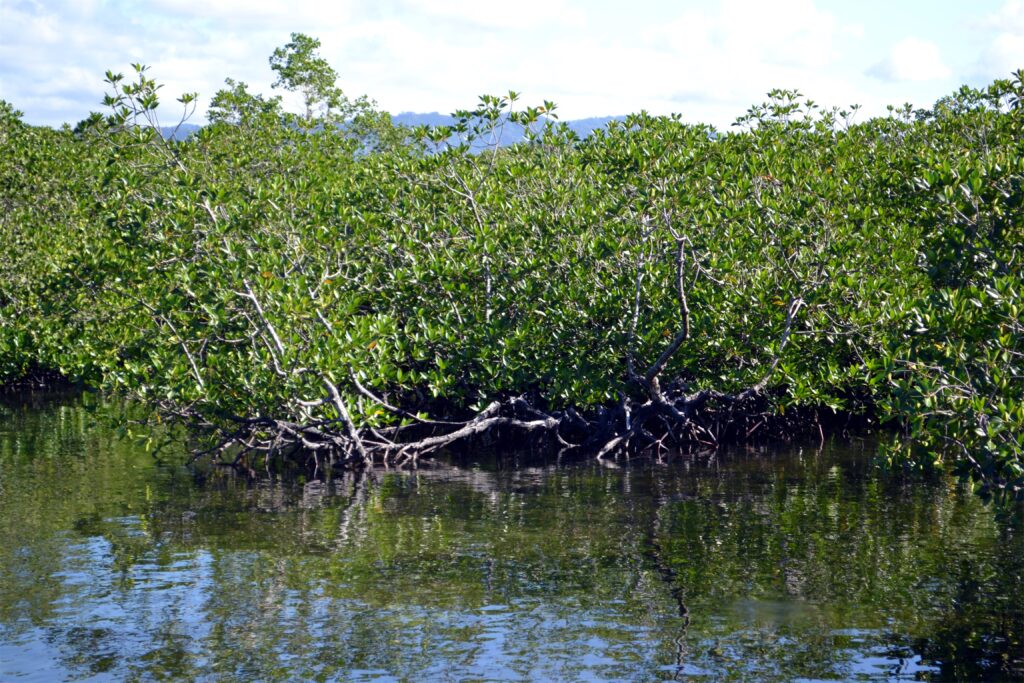Text and Photos by Henrylito D. Tacio
During the Earth Day celebration in 2017, government officials of the province of Davao de Oro spearheaded a mangrove tree plantation at Cansilac Mangrove site in barangay Pindasan of Mabini.
The mangrove tree planting was done in coordination with the town’s local government unit, known as “the Jewel of Davao Gulf” (because of its mangrove forests, white sand beaches, and rich coral reefs).
“As we are celebrating Earth Day, we reiterate our drive to protect the environment,” Governor Jayvee Tyron Uy was quoted as saying. “We also have to thank and remember this day as a symbol of unity from our leaders and people.”
Why so much ado about mangroves? One reason is that they serve as nature’s buffer between land and sea. A feature in The Manila Times explained: “(Mangroves) protect coastal communities from storm surges caused by typhoons and control erosion along the shoreline so that the waters would not easily engulf land.”
This has been supported by a study led by the World Bank. The study showed that mangroves “reduce the damage from flooding to people and property by 25% annually.”

The study further said: “The Philippines is among the most vulnerable countries in the world to flood damage from typhoons and extreme events.” But Philippine coasts have powerful natural defenses: their mangroves.
“Many coastal habitats, including mangroves, coral reefs and salt marshes, can significantly reduce flooding and erosion, and thus protect people and property from the damages caused by storms, sea level rise and king tides,” the study said.
“The aerial roots of mangroves retain sediments and prevent erosion, while the roots, trunks and canopy reduce the force of oncoming waters and storm surge and thus reduce flooding,” it added.
Let’s talk about economics. “Across the Philippines, mangroves reduce flooding to 613,000 people annually, 23% of whom live below the poverty line,” the study said. “Mangroves also avert more than US$1 billion in damages to residential and industrial property.”
Now, if mangroves were restored to their 1950 distribution, the study said there would be additional benefits to 267,000 people annually, including 61,000 people below poverty, and an additional US$450 million in annual averted damages.
Mangrove forests occupy the area of the coastal zone between the mean sea level and extremely high water of spring tides, according to Dr. Miguel Fortes, one of the country’s experts on mangroves.
“They thrive in sheltered tidal flats, coves, bays and river estuaries,” he explained. “Usually, mangroves are associated with thick stands of medium-sized and even-aged trees, nipa palms and other herbaceous plants.”

Mangroves are vital to marine life, says Dr. Rafael Guerrero III, former director of the Philippine Council for Aquatic and Marine Research and Development. They serve as sanctuaries and feeding grounds for fish that nibble on detritus (fallen and decaying leaves) trapped in the vegetation and on the bark and leaves of living trees.
“(Mangroves) are important feeding sites for many commercially important fish species, shrimps, prawns, mollusks, crabs, and sea cucumbers,” a World Bank report on environment adds. “Fry that gather in mangrove areas are very important for aquaculture.”
A study done by the Department of Environment and Natural Resources has found out that mangroves are home to 68 species of fish (bangus, mullet, kitan, to name a few), 54 species of crustaceans, and 56 species of gastropods.
Mangroves also help in arresting global warming. Mangroves and tidal marshes, and seagrass meadows sequester and store substantial amounts of coastal blue carbon from the atmosphere and ocean. As such, they “are now recognized for their role in mitigating climate change,” said Ma. Josella Pangilinan of Conservation International-Philippines.
“If rainforests can store a ton of carbon per hectare, mangrove forests can store up to four times more acting as effective carbon sinks deterring global warming,” the “Times” feature said.
The “Science Daily” further explained the role of mangroves in carbon sequestration: “The mangrove forest’s ability to store such large amounts of carbon can be attributed, in part, to the deep organic-rich soils in which it thrives. Mangrove-sediment carbon stores were on average five times larger than those typically observed in temperate, boreal and tropical terrestrial forests, on a per-unit-area basis.”
Despite their importance, mangrove forests throughout the country are fast disappearing. A briefing paper released by the Bureau of Fisheries and Aquatic Resources (BFAR) said that the country’s mangrove forests are down to 117,000 hectares from the 500,000 hectares in 1918.
The BFAR paper said that of the remaining 117,000 hectares, 95% of these are already “secondary growth.” This means that only 5% constitutes old or “primary mangrove forests.”
“Most mangrove areas in Luzon and the Visayas are made up of reproduction brush and young growth. Thus, mangrove forests remaining along Philippine coasts today are of much lower quality than early in the century, and they cover less than one-third of their original area,” the paper pointed out.
“Mangroves in the Philippines have long been ‘ecologically disturbed by rampant cutting for timber products and massive conversion of forests into aquaculture ponds,” said a summit overview of the state of the mangroves in 2015.
The above statement supported the findings of the BFAR, which said: “Sometime in the 1960s and 1970s, most mangrove forests were converted into fishponds while others were reclaimed for residential and industrial purposes and used for expansion of coastal communities.”
Today, another threat is looming. “Sea level rise is another threat that will aggravate the situation by causing widespread tree mortalities due to drowning,” the summit overview stated.
There is bad news, and there is good news. Dr. Henry A. Adornado, director of the Ecosystems Research and Development Bureau, a line agency of the Department of Environment and Natural Resources, said: “Over the years, there has been a dramatic decline in our mangrove resources. This condition is further aggravated by the occurrence of strong typhoons and other anthropogenic activities.
“Consequently, the values and importance of mangroves against these disturbances are increasingly appreciated by policy makers and managers,” he added.

